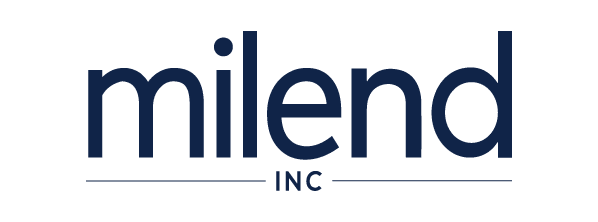Key Takeaways
- Explore Beyond Traditional Mortgages: Discover a range of innovative financing options, including Adjustable-Rate Mortgages (ARMs), FHA loans for first-time buyers, VA loans for veterans, and unique strategies like rent-to-own agreements and seller financing. These options offer flexibility and can make homeownership more accessible.
- Tailored Solutions for Every Buyer: Whether you’re a first-time homebuyer, a veteran, or someone with a non-traditional income, there’s a financing solution to meet your needs, including easy financing for self-employed individuals, non-warrantable condos, and properties requiring jumbo loans.
- Financial Preparedness is Key: The path to homeownership starts with financial readiness. Understanding the importance of saving for a down payment, improving your credit score, and budgeting for the ongoing costs of owning a home (like property taxes and maintenance) is crucial.
Owning a home is one of the biggest financial milestones in our lives, and it’s the first real step toward building real prosperity into your financial picture. It’s a place where memories are made, families grow, and personal space is cherished. When interest rates are high, home prices balloon, and everything from groceries to diapers to cars is more expensive than ever before…getting onto or moving up the property ladder can feel like a pipe dream.
The great news in times like these is that traditional mortgage options are not the only path to owning a home. High cost of homes and cost of living are driving eager home buyers, sellers, and home owners looking to refinance to explore creative financing options in droves. So, I’m here to break down some more off-the-wall options to put your home goals back into reach and then help you weigh the pros and cons.
Understanding Your Needs and Goals
The spring of 2024 is shaping up to be a period of adjustment and opportunity in the real estate market. With the backdrop of the previous year’s trends, we’re looking at a landscape that’s both familiar and full of new potential pathways for buyers and sellers alike.
Traditional Mortgages and Beyond
While traditional 15-year and 30-year mortgages are familiar to most, there are alternatives that offer flexibility and opportunities to save on interest, reduce monthly payments, or both. Let’s explore some creative options:
Adjustable-Rate Mortgages (ARMs): ARMs can be a viable option for those expecting to move or refinance before the interest rate adjusts. Initially, ARMs offer lower interest rates compared to fixed-rate mortgages, potentially saving you money in the short term.
If you’re a blossoming professional looking to buy your first property, need flexibility to travel for work, and expect your income to grow, this can be a good fit and a great entry point into the real estate market.
FHA Loans: Ideal for first-time homebuyers with smaller down payments and less-than-perfect credit scores. FHA helps buyers by insuring the loan so the lenders can offer lower down payments, competitive interest rates, and low closing costs.
These loans are designed to help out first-time homebuyers. The flexibility of having a lower down payment and a shorter or more volatile credit history makes this a great fit for young couples, young families, and single professionals looking to get into their first home.
VA Loans: For veterans, active-duty service members, and some surviving spouses, VA loans provide a path to homeownership with no down payment, no private mortgage insurance (PMI), and competitive rates.
This program is an amazing benefit for veterans and their families, and many veterans that we’ve worked with have completely revolutionized their financial future by getting into a home, or refinancing their existing mortgage into a VA loan.
Creative Financing Techniques
Beyond traditional and government loans, there are several creative strategies to consider:
Rent-to-Own Agreements: This arrangement allows you to rent a home with the option to buy it later. A portion of your rent payments goes toward the purchase price. This can be a great way to build equity and lock in a purchase price while you save for a down payment.
Seller Financing: In some cases, sellers may agree to finance the purchase themselves. This can eliminate traditional lender fees and offer more flexible terms. It’s particularly useful in markets where buyers and sellers are looking for innovative ways to close deals.
Generally, this option has more risk and less reward that many more stable financing options, but if you want to learn more about seller financed properties, check out my in-depth article:
Lease with Option to Purchase: Similar to rent-to-own, this option involves leasing a property with the right to purchase it at a predetermined price before the lease expires. This can be an excellent way to “try before you buy.”
Assumable Mortgages: Assuming the seller’s mortgage can be an option if the current interest rates are higher than the rate of the existing mortgage. This involves taking over the seller’s remaining mortgage balance and terms, potentially saving on closing costs and interest.
Specialized Lending Programs: A Closer Look
Milend offers specialized lending that we find makes home financing more accessible than most other lenders for self-employed borrowers, non-warrantable condos, and jumbo loans for higher-value properties.
If you have struggled to get financed on an unconventional property type, or with documenting your income, we have some of the most flexible financing options for your needs.
The Importance of Financial Preparedness
Regardless of the financing option you choose, financial preparedness is key. This includes saving for a down payment, improving your credit score, and understanding the full scope of homeownership costs, including property taxes, insurance, maintenance, and utilities.
Personal Success Stories: How Creative Financing Made Dreams Come True
We’ve had the privilege of helping many families navigate the path to homeownership through creative financing. One memorable story is that of a young couple eager to buy their first home but struggling with a limited budget and less-than-stellar credit. Through a combination of an FHA loan, help paying down credit card debt, and in-depth guidance from their Milend loan consultant, they were able to improve their financial standing and purchase a home that fit their needs and budget. Their journey from renters to proud homeowners is a testament to the power of perseverance and the right financing strategy.
Your Next Home is Within Reach
Homeownership is within reach, even if traditional financing options don’t seem like a perfect fit. By exploring creative financing options and preparing financially, you can find a path that aligns with your needs, goals, and financial situation. At Milend, we’re committed to helping you explore all your options and guide you through the process, ensuring you make informed decisions every step of the way.
If you’re ready to take the next step toward homeownership, we’re here to help. Post in the comments or reach out through our Contact page!
Sign up for our newsletter to stay updated on the latest financing tips, success stories, and personalized advice. Let’s make your dream home a reality together.
Let’s Grow Together
As we navigate the spring market and beyond, let’s remember the values that bind us: trust, commitment, personal growth, and the importance of home. If you’re pondering your next move or seeking guidance in the ever-changing real estate landscape, reach out. Together, we can explore your options, prepare for the future, and turn the dream of homeownership into reality.
Stay tuned for more insights, and don’t hesitate to join our community for updates, tips, and stories that celebrate our journeys home, one step at a time.

Understanding Closing Costs: A Homebuyer’s Guide
Read more...









